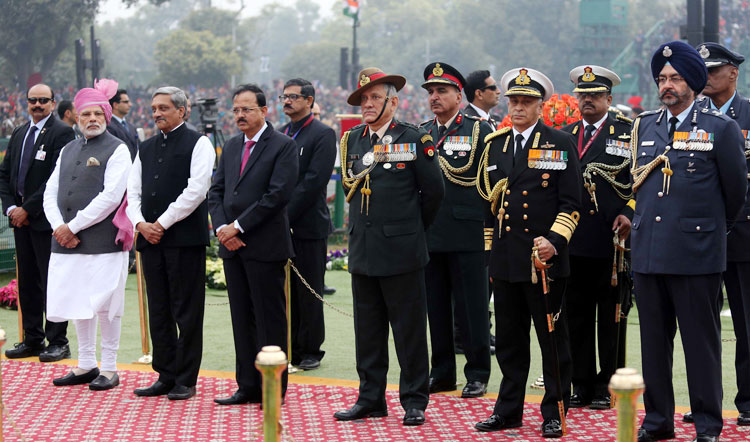Money Over Matter | Shroud of Secrecy
 Maj. Gen. Mrinal Suman (retd)
Maj. Gen. Mrinal Suman (retd)
Due to secrecy, the world arms trade lends itself to malpractices. Transparency International counts it in the top three sectors for bribery and corruption (oil and major infrastructure projects being the other two). Worse, as per the estimates of the US government, while accounting for less than one per cent of the international trade, the arms trade accounts for almost 50 per cent of all kickbacks in the world.
Even though India’s defence imports constitute a very small portion of the world trade, they have come to acquire notoriety for sleaze and corruption. Every defence deal gets mired in allegations of irregularities, lack of transparency and financial impropriety. India gained Independence in 1947 and the infamous jeep scandal erupted in 1948. Since then, every major defence deal has been dogged by allegations of kickbacks, controversies and enquiries. Despite the fact that a number of measures have been initiated by successive governments to make defence procurements corruption free, sleaze money continues to tweak the process. The environment is convinced that no deal can be successfully clinched without paying ‘speed money’.
Transgressions in the purchase of helicopters for VVIPs have been hogging headlines for the last five years. According to the Comptroller and Auditor General of India (CAG), ‘the entire process of acquisition poses serious questions on accountability and lack of transparency in the finalisation of contract, which need to be addressed’.
Similarly, purchase of two fleet tankers from Fincantieri during the period 2008-10 was severely criticised by CAG for showing undue favour to the Italian shipyard – the company did not have the specified steel and the commercial negotiations did not address the issue of reasonability of pricing adequately. Selection of Rafale aircraft as the lowest bidder also came under cloud for inequitable comparison.
Recurrent generation of demand for TATRA vehicles is an example of systemic corruption of the system. As the vendor was obliging all decision makers, it had become an annual ritual. Requirements were inflated to increase the amount of kickbacks. In September 2010, the then Army Chief declined to clear procurement of 1,600 TATRA vehicles. It was a patently sham demand to place orders on BEML for illegal gains. Apparently, the vehicles were not required as no procurements have been done since then.

Prime Minister Narendra Modi and defence minister Manohar Parrikar with the three service chiefs General Bipin Rawat, Admiral Sunil Lanba and Air Chief Marshal B.S. Dhanoa
Frailties of the Procedure
Defence procurements are a multi-dimensional multi-agency process. A large number of entities participate to ascertain and confirm requirement and suitability of equipment for procurement. As Indian governance works by consensus, all agencies are required to be brought on board. No official is courageous enough to overrule a dissenting note. Such an arrangement gives undue clout to all agencies. They can easily delay or abort a proposal. Therefore, helpless vendors get coerced to ensure that all agencies remain in the loop through speed money at every stage.
Indian acquisition process consists of two distinct stages – planning and acquisition (technical and commercial phases). Both the stages are vulnerable to corrupt practices.
During the planning stage, inter-se precedence accorded to the acquisition proposals contained in the Services Capital Acquisition Plan can be manipulated subjectively. An urgent procurement proposal can be initiated for the purchase of items that are being manufactured/marketed by a ‘friendly vendor’. As resources are always insufficient to cater for all proposals, only schemes that are accorded higher priority are included in the Annual Acquisition Plans. Hence, priorities are suitably skewed.
Services Qualitative Requirements (SQR) that define essential performance characteristics of the equipment being sought are often manipulated to favour a chosen vendor and eliminate competition, thereby effectively creating a single-vendor situation. It is one of the most commonly prevalent practices. In the infamous case of VVIP helicopters, two critical parameters were cleverly introduced to favour the chosen vendor.
Field trials are by far the most critical aspect of the technical evaluation process. These are carried out under the aegis of the concerned Service Headquarters to validate performance claims made by the vendors with respect to compliance with QR. Trials are required to be conducted in all conditions where the equipment is likely to be deployed.
Manipulation of field trials poses the biggest threat to the integrity of the whole procurement system.
Another common ploy is to ‘persuade’ trial units and intermediate commanders to raise irrelevant issues to generate doubts about the efficacy of competing equipment on specious grounds and seek retrial. Another subterfuge commonly employed is to over-emphasise importance of the strong points of the favoured equipment while highlighting every small weakness of the competing items to show them in poor light.
Evaluation by the General Staff (GS) is the final step in determining whether the equipment is technically accept
Subscribe To Force
Fuel Fearless Journalism with Your Yearly Subscription
SUBSCRIBE NOW
We don’t tell you how to do your job…
But we put the environment in which you do your job in perspective, so that when you step out you do so with the complete picture.








